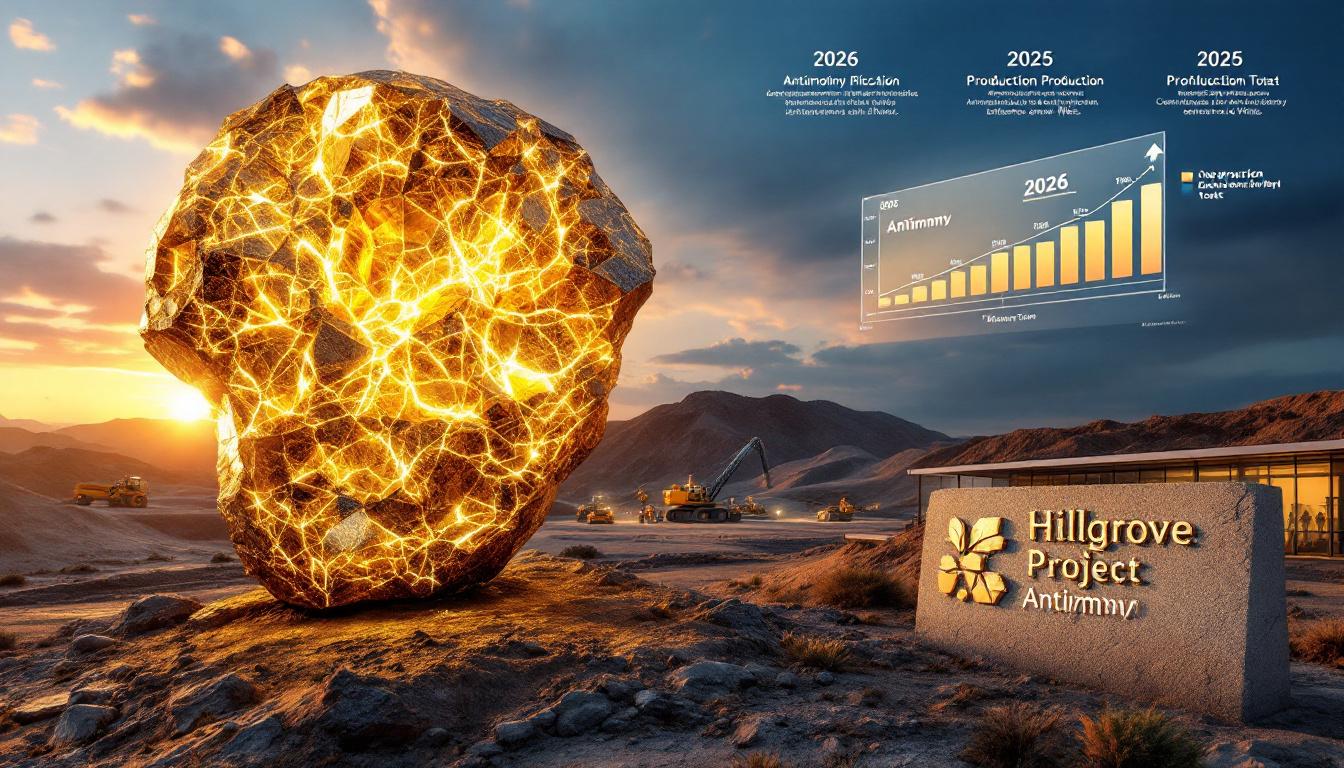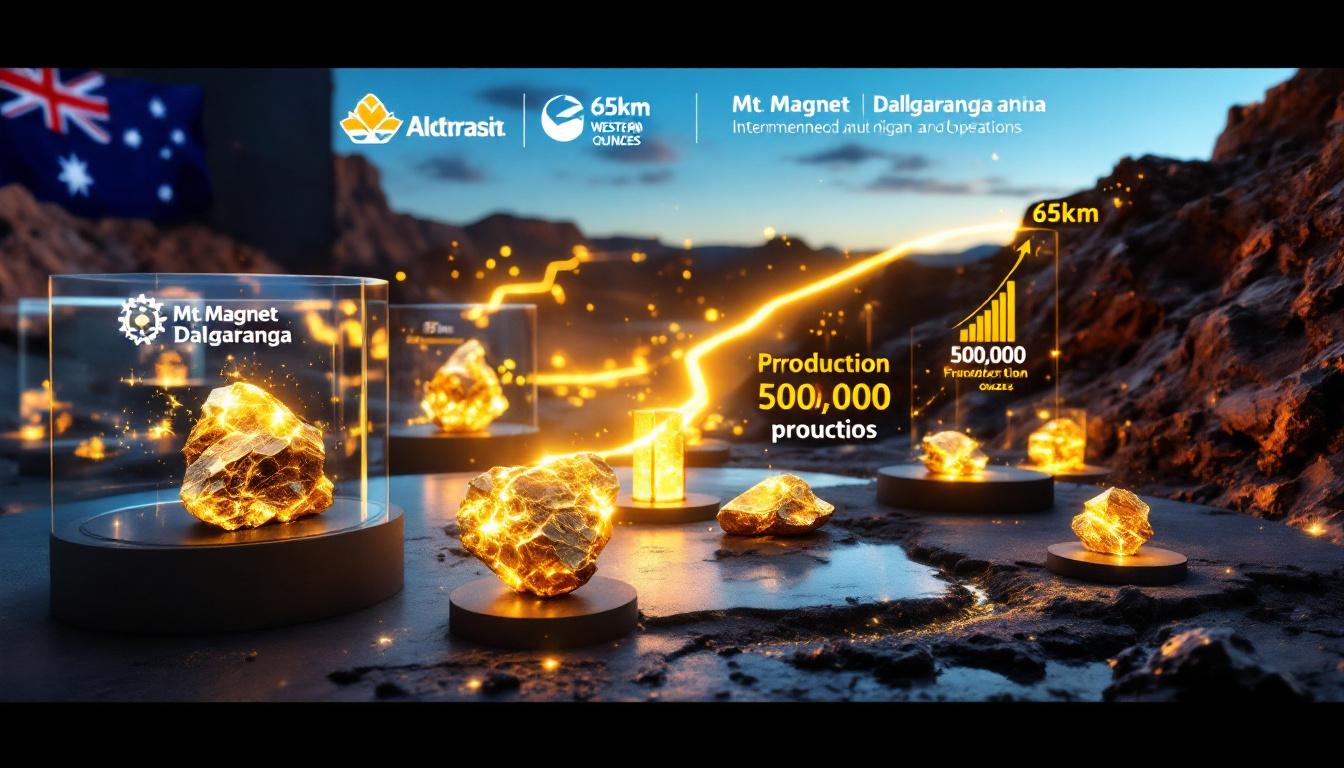Revolutionary Breakthrough: Xi'an Researchers Develop Advanced Underground 3D Mapping Technology
Underground mapping has long been a challenging frontier in geospatial technology, with traditional methods falling short in accuracy, efficiency, and safety. Researchers from Xi'an University of Science and Technology have developed a groundbreaking solution that promises to transform how we visualize and navigate subterranean environments, particularly in mining operations.
This innovative approach integrates cutting-edge technologies to overcome the unique challenges of underground environments, offering unprecedented precision and efficiency for mining companies worldwide. The implications for safety, operational efficiency, and resource management are profound, potentially reshaping mining industry innovation standards for years to come.
What is the New 3D Mapping Method Developed by Xi'an Researchers?
The Xi'an researchers have pioneered a sophisticated three-dimensional reconstruction method specifically designed for coal mine tunnels. At its core, this technology integrates Light Detection and Ranging (LiDAR) with Inertial Measurement Units (IMU) to create detailed spatial models in environments where traditional mapping techniques fail.
"Underground tunnels are a unique challenge because of their unstructured environments," notes the research team from Xi'an University of Science and Technology, highlighting the need for specialized solutions in these complex settings.
The Integrated LiDAR-IMU Approach
The system's foundation lies in its multi-fusion sensor array, which combines high-precision LiDAR technology with sophisticated IMU systems. Unlike conventional mapping methods that rely on single data sources, this integrated approach creates redundancy that significantly improves reliability in challenging conditions.
The LiDAR component captures detailed point cloud data of tunnel surfaces, while the IMU continuously tracks the system's position and orientation. When combined through proprietary algorithms, these complementary technologies compensate for each other's limitations, producing remarkably accurate 3D geological modelling results.
Most significantly, this integration allows for real-time processing and reconstruction—a critical advancement for operations requiring immediate spatial awareness and decision-making capability.
Key Technical Innovations
What truly sets the Xi'an technology apart is its specialized adaptation of Simultaneous Localization and Mapping (SLAM) algorithms for underground environments. Unlike traditional SLAM applications designed for structured, GPS-accessible environments, the Xi'an system incorporates advanced error correction mechanisms that specifically address the challenges of enclosed underground spaces.
The system employs machine learning components that continuously improve mapping accuracy through iterative processing. This self-optimizing capability means the technology becomes more precise with each deployment, gradually building an increasingly accurate digital representation of the underground environment.
Another breakthrough feature is the system's ability to distinguish between permanent tunnel features and temporary objects or disturbances, such as equipment or dust clouds, ensuring the final model accurately represents the tunnel's true structure.
Why is Underground Tunnel Mapping So Challenging?
Mapping underground tunnels presents a unique set of challenges that conventional geospatial technologies struggle to overcome. These difficulties have historically limited the accuracy, safety, and efficiency of underground operations.
Unique Environmental Obstacles
Perhaps the most significant challenge is the absence of Global Positioning System (GPS) signals, which cannot penetrate deep underground. This limitation eliminates the primary positioning technology used in surface mapping, forcing underground systems to rely entirely on internal sensors and relative positioning.
"Underground tunnels are a unique challenge for mapping because of their unstructured environments," explains the Xi'an research team. These environments feature poor lighting conditions that hamper visual mapping techniques, requiring specialized sensors that can operate effectively in near or total darkness.
Additionally, mining environments contain significant amounts of airborne dust and moisture that interfere with sensing equipment. These particles can scatter light signals used by LiDAR systems and contaminate optical lenses, degrading data quality over time.
The complex geometries of underground tunnels present another substantial challenge. Unlike man-made surface structures with regular shapes, mine tunnels often feature irregular surfaces, varying cross-sections, and unexpected features that require sophisticated detection and modeling capabilities.
Previous Mapping Limitations
Traditional survey methods for underground tunnels have relied heavily on manual labor, with surveyors physically measuring and recording dimensions at regular intervals. This approach is not only time-consuming but also introduces significant human error, particularly over extended distances.
Conventional technologies suffer from cumulative measurement errors that compound as tunnels extend deeper underground. Even small inaccuracies in orientation or distance measurements can result in substantial positioning errors after several hundred meters, rendering maps increasingly unreliable in extensive tunnel networks.
The time-intensive nature of traditional mapping methods often creates operational bottlenecks, forcing mining activities to pause during survey work or proceed with outdated spatial information. This inefficiency translates directly to production delays and increased operational costs.
Most concerning, manual survey methods expose personnel to unnecessary safety risks, including roof falls, poor air quality, and other hazards inherent to underground environments. The Xi'an technology addresses this critical issue by minimizing human presence in potentially dangerous areas.
How Does the Xi'an Technology Transform Underground Mapping?
The innovative approach developed by Xi'an researchers represents a paradigm shift in underground spatial data collection and processing, offering capabilities previously unattainable in subterranean environments.
Autonomous Mapping Capabilities
At the forefront of this technology's transformative potential is its autonomous operation. The system employs self-navigating robotic platforms specifically designed to traverse complex tunnel environments without human guidance. These platforms can negotiate irregular terrain, navigate around obstacles, and maintain accurate positioning even in complete darkness.
The technology captures and processes data in real-time during movement, eliminating the stop-and-go approach required by traditional survey methods. This continuous operation dramatically increases efficiency while producing more comprehensive spatial models.
Perhaps most significantly, the autonomous nature of the system allows it to operate in environments deemed too hazardous for human surveyors. Whether facing poor air quality, unstable ground, or other dangers, the robotic platforms can collect critical spatial data without risking human safety.
Enhanced Data Quality and Resolution
The Xi'an mapping technology achieves remarkable spatial accuracy, with preliminary tests indicating sub-centimeter precision in most environments. This level of detail allows for the identification of minute structural features that might indicate developing safety concerns.
The system captures comprehensive tunnel geometry, including irregularities that traditional point-to-point measurements might miss. This complete spatial representation provides mining engineers with unprecedented insight into the actual conditions of underground workings.
The technology produces 3D point clouds with density sufficient for detailed structural analysis, enabling engineers to assess tunnel stability, plan reinforcement measures, and monitor changes over time with exceptional precision.
Beyond pure geometric data, the system incorporates texture mapping capabilities that document surface conditions, providing visual context that helps identify geological features, moisture patterns, and other characteristics relevant to modern mine planning techniques.
What Applications Does This Technology Have in Mining?
The practical applications of the Xi'an 3D mapping technology extend across multiple aspects of mining operations, with particular significance for safety enhancement and operational efficiency.
Safety Enhancement Applications
The technology enables detailed structural integrity assessment through comprehensive geometric analysis. By identifying subtle deformations or stress indicators, engineers can proactively address potential failure points before they develop into hazardous conditions.
The system's precision allows for the identification of potential roof fall or wall collapse areas through detection of minor shifts, cracks, or bulges that might escape visual inspection. This early warning capability can prevent accidents and save lives.
Regular mapping creates a temporal record of tunnel deformation, allowing engineers to monitor changes over time and assess the effectiveness of support systems. This longitudinal data provides invaluable insight into long-term structural behavior.
In emergency situations, accurate spatial models facilitate response planning by providing rescue teams with detailed information about tunnel configuration, potential hazards, and optimal access routes. This capability is particularly valuable when normal access might be compromised.
Operational Efficiency Improvements
The detailed spatial data enables optimized ventilation system design based on precise tunnel dimensions. By accurately modeling airflow and identifying restrictions, engineers can improve air quality while reducing energy consumption.
The enhanced spatial understanding contributes to more accurate resource estimation by precisely delineating ore body boundaries and calculating volumes with unprecedented accuracy. This improvement directly impacts financial planning and operational decision-making.
The technology supports enhanced blast design and excavation planning through detailed modeling of target areas. By precisely mapping existing structures, engineers can design more effective and efficient extraction sequences.
Perhaps most significantly, the autonomous mapping capabilities dramatically reduce downtime for survey activities. Operations can continue with minimal interruption while spatial data is collected, eliminating a common source of productivity loss.
How Does the Technology Compare to Conventional Methods?
When evaluated against traditional underground mapping approaches, the Xi'an technology demonstrates significant advantages in speed, efficiency, and overall value proposition.
Speed and Efficiency Advantages
The autonomous mapping system achieves up to 80% reduction in mapping time compared to traditional surveying methods. This dramatic improvement stems from continuous operation without the need for manual measurements at predetermined stations.
The technology significantly decreases human labor requirements, allowing skilled personnel to focus on data analysis and interpretation rather than collection. This shift not only improves efficiency but also enhances job satisfaction and safety.
One of the most valuable capabilities is the system's ability to map extensive tunnel networks in a single operation. Unlike traditional methods that become increasingly cumbersome and error-prone over distance, the Xi'an technology maintains consistent accuracy throughout lengthy passages.
The continuous data collection occurs without interruption to mining activities, allowing production to proceed while spatial information is gathered. This parallel operation eliminates a significant source of operational downtime.
Cost-Benefit Analysis
While the initial investment in equipment represents a significant capital expenditure, the long-term operational savings create a compelling value proposition. Reduced labor costs, minimized downtime, and improved planning capabilities typically deliver positive return on investment within 12-18 months of implementation.
A major benefit is the reduced personnel exposure to hazardous environments. By minimizing the need for human presence in potentially dangerous areas, companies can significantly reduce accident risk and associated costs, including insurance premiums and potential liability.
The decreased production delays from survey activities directly impact the bottom line. With traditional methods often requiring operational pauses of 24-48 hours for comprehensive mapping, the near-continuous operation permitted by the Xi'an technology represents substantial productivity gains.
Perhaps most significantly, the enhanced planning capabilities lead to optimized resource extraction. The detailed spatial understanding allows for more precise targeting of valuable deposits, reducing waste and maximizing recovery rates.
What Technical Specifications Make This System Unique?
The exceptional performance of the Xi'an mapping technology stems from its carefully engineered hardware components and innovative software solutions, creating a system specifically optimized for underground environments.
Hardware Components
The system employs high-precision LiDAR sensors housed in specialized dust-resistant enclosures. These sensors feature advanced filtering algorithms that distinguish between permanent tunnel features and temporary obstructions such as dust clouds or personnel.
Military-grade IMU systems adapted specifically for mining conditions provide exceptionally accurate motion tracking. These inertial sensors maintain positioning accuracy even during extended operations without external reference points.
The technology incorporates ruggedized computing platforms capable of processing massive data streams in real-time under harsh environmental conditions. These hardened systems are designed to withstand vibration, moisture, and dust exposure without performance degradation.
At the physical level, custom-designed robotic carriers provide stable platforms for the sensor array while navigating irregular tunnel floors. These carriers feature specialized suspension systems that isolate sensitive components from vibration and impact.
Software Innovations
The heart of the system lies in its proprietary algorithms for data fusion and noise filtering. These sophisticated mathematical models combine inputs from multiple sensors while automatically identifying and compensating for measurement errors or environmental interference.
The real-time 3D reconstruction capabilities transform raw sensor data into actionable spatial models while the system is in motion. This immediate processing eliminates the delay between data collection and availability that characterizes traditional methods.
Cloud integration enables remote access to mapping data, allowing off-site experts to analyze results and provide guidance without traveling to the mine site. This connectivity dramatically expands the availability of specialized expertise.
Perhaps most impressively, the system incorporates automated feature recognition for structural analysis. The software can identify key elements such as support structures, geological boundaries, and potential hazards without human intervention.
How Will This Technology Impact the Future of Underground Operations?
The transformative potential of the Xi'an mapping technology extends beyond immediate operational improvements to enable fundamental shifts in how underground environments are understood, managed, and utilized.
Digital Twin Implementation
The technology enables creation of complete digital replicas of underground environments with unprecedented accuracy and detail. These "digital twins" serve as virtual representations that can be examined, analyzed, and manipulated without physical access to the actual tunnels.
The spatial models seamlessly integrate with mine planning and management software, creating a unified digital ecosystem that supports comprehensive operational oversight. This integration eliminates information silos and improves decision-making across departments.
As tunnels evolve through ongoing mining activities, the models can be updated in real-time to maintain an accurate representation of current conditions. This dynamic capability ensures that planning and operations always proceed with the most current spatial information.
The detailed models support virtual reality applications for training and planning, allowing personnel to familiarize themselves with underground environments before physical entry. This capability is particularly valuable for emergency response training and new employee orientation.
Industry 4.0 Integration
The mapping technology creates infrastructure for connection with IoT sensors for environmental monitoring. By precisely locating sensors within the spatial model, companies can create comprehensive monitoring networks that provide contextualized data about conditions throughout the mine.
The detailed spatial information enables automated equipment guidance using accurate position references. This capability supports remote operation and increasing automation of mining equipment, improving both safety and efficiency.
The system facilitates predictive maintenance based on tunnel condition assessment. By identifying areas where ground conditions are deteriorating or support structures are showing stress, maintenance can be scheduled proactively rather than reactively.
Perhaps most significantly, the technology enables truly data-driven operations for operational optimization. With comprehensive spatial understanding combined with production data, companies can make more informed choices about resource allocation, development sequencing, and extraction methods.
What Challenges Remain in Underground Mapping Technology?
Despite its significant advantages, the Xi'an mapping technology faces several ongoing challenges that limit its application or require additional development to fully realize its potential.
Technical Limitations
Battery life constraints remain a significant factor for extended autonomous operations. Current power systems typically support 4-6 hours of continuous mapping before requiring recharging, limiting the coverage possible in a single deployment.
The massive data processing requirements for extremely large tunnel networks present computational challenges. Processing point clouds containing billions of data points requires substantial computing resources, particularly for real-time applications.
Integration with existing mine management systems often presents compatibility challenges. Many mines operate legacy software that was not designed to accommodate the volume and complexity of data generated by advanced mapping systems.
The technology requires careful calibration to maintain accuracy across varying environmental conditions. Factors such as temperature fluctuations, humidity levels, and dust concentration can affect sensor performance if not properly accounted for.
Implementation Barriers
Industry adoption faces hurdles related to resistance to new technologies, particularly in traditionally conservative mining sectors. Companies may be reluctant to invest in advanced systems without extensive proof of performance in their specific operating conditions.
The technology requires significant training for technical personnel to operate effectively and interpret results correctly. This knowledge gap necessitates comprehensive educational programs and ongoing support during implementation.
Regulatory considerations for autonomous systems in mines vary widely across jurisdictions. Some regions have established frameworks for robotic systems in underground environments, while others require extensive testing and certification before deployment.
The initial capital investment requirements present a significant barrier, particularly for smaller mining operations. While the long-term benefits create a compelling business case, the upfront costs can be prohibitive without financing options or phased implementation approaches.
FAQ: Understanding the Xi'an 3D Mapping Innovation
How accurate is the 3D mapping system?
The system achieves sub-centimeter accuracy in spatial measurements under typical operating conditions. This exceptional precision enables detailed structural analysis and identification of subtle features that might indicate developing problems.
The accuracy remains consistent throughout extended tunnel networks, without the cumulative errors that plague traditional survey methods. This reliability is particularly valuable in deep mining operations where surface references become increasingly remote.
The system's error correction algorithms automatically compensate for minor sensor drift, maintaining accuracy even during extended operation. This self-calibrating capability ensures reliable results without frequent manual adjustments.
For critical applications requiring maximum precision, the system can employ additional reference points to further enhance accuracy. These reference markers serve as known positions that help constrain any potential drift in the mapping system.
Can the system operate in active mining environments?
Yes, the technology is specifically designed to function in active mining conditions. The ruggedized components withstand dust, moisture, vibration, and other environmental challenges common in working mines.
The system incorporates specialized filtering algorithms that distinguish between permanent tunnel features and temporary elements such as equipment or personnel. This discrimination ensures that the final spatial model accurately represents the tunnel structure regardless of activity during mapping.
The autonomous platforms navigate safely around obstacles including operating equipment and personnel. Advanced collision avoidance systems prevent interference with ongoing operations while maintaining mapping coverage.
The technology maintains accuracy even during blasting periods through vibration isolation systems and algorithmic compensation for seismic disturbances. This resilience allows mapping to continue during normal production activities without data degradation.
What is the range of a single mapping operation?
Depending on battery capacity and environmental conditions, the system can map several kilometers of tunnels in a single deployment. Current models typically achieve 2-3 kilometers of coverage before requiring battery replacement or recharging.
For extended tunnel networks, multiple units can be coordinated to cover different sections simultaneously. The resulting data sets are automatically aligned and integrated into a unified spatial model without visible seams or inconsistencies.
The system's range can be extended through strategically positioned charging stations that allow for brief recharging during operation. This infrastructure enables continuous mapping of even the most extensive underground complexes.
In particularly challenging environments with extreme dust, moisture, or temperature conditions, the operational range may be reduced. However, the modular design allows for quick battery swaps to restore functionality with minimal downtime.
How is the data integrated with existing mine planning software?
The system exports data in standard formats compatible with common mining software platforms, including AutoCAD, Vulcan, and Deswik. This compatibility ensures seamless incorporation into existing digital infrastructure without requiring wholesale system replacements.
Custom integration modules are available for specialized applications with
Ready to Spot the Next Major Mining Discovery?
Discover how breakthrough technologies like this 3D mapping system are transforming the mining landscape while staying ahead of market-moving mineral discoveries with Discovery Alert's proprietary Discovery IQ model. Visit our discoveries page to see how early notification of significant ASX announcements can create exceptional investment opportunities.




